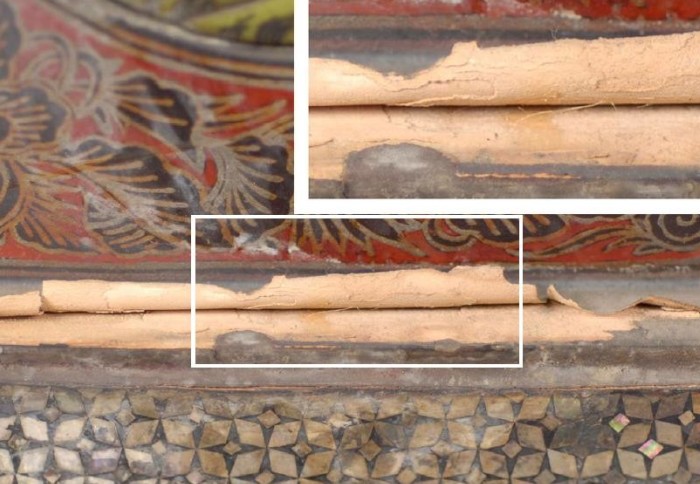SERCH's First Workshop: Mechanics for Art Conservation

Peeling Lacquer by Nanke Schellman
Science and Engineering Research for Cultural Heritage (SERCH) one of Imperial's Network for Excellence holds their first workshop in December 2021.
The first workshop, entitled “Mechanics for Art Conservation”, organised by the Science and Engineering Research for Cultural Heritage (SERCH) Network for Excellence was held in December 2021. This workshop, in collaboration with the University of Glasgow, was part of the dissemination plan for the EPSRC grant “The mechanisms of fatigue of multilayer paint systems in wood”. The workshop was organised by Professor Ambrose Taylor (Professor of Materials Engineering, Department of Mechanical Engineering) and Professor Maria Charalambides (Professor of the Mechanics of Materials, Department of Mechanical Engineering) with support from Institute for Molecular Science and Engineering.
The event brought together researchers and practitioners from academia with museum professionals to discuss challenges and applications related to cultural heritage. Over 150 people attended from over 6 countries. This created a highly collaborative environment with many people from different backgrounds coming together to discuss their work on art conservation.

During the afternoon, short 25-minute talks were given by a range of speakers. In the first half of the event Professor Christina Young form the University of Glasgow spoke on her work in their three-year funded EPSRC-project which aims to determine how cracks due to environmental factors lead to delamination of painted surfaces or underlying layers. From the National Trust, Dr Nigel Blades and Rebecca Helen presented on the issues that the Trust faces with regards to the damage of panel paintings in historic homes around the UK. Professor Charalambides gave a detailed talk about her research into numerical models for predicting crack initiation in wood panel paintings under low-cycle weather-induced fatigue. Moving forward with a similar topic, Professor Lucasz Bratasz from the Polish Academy of Sciences presented their work on modelling crack patterns in panel paintings to understand why panel paintings survived in uncontrolled environments.

After a short break the attendees enjoyed more presentations from experts in the art conservation field. Dr Eric Hagan from the Canadian Conservation Institute presented on his research in acoustic emission analysis of humidity–induced damage to model wood structures. From Eindhoven University of Technology Professor Akker Suiker spoke on how they model failure and deformation behaviour of materials and structures relevant for the built environment. This directly led on to their research in how cracking in historical art items is directly related to indoor climate variations. The final presentation was given by Dr Constantina Vlachou who works in the Conservation and Collections Care department at Historic Royal Palaces. This presentation focused on monitoring the deterioration of large textiles, specifically tapestries.
Attendees were encouraged to ask questions after each presentation. This facilitated discussion around the different topics. It became evident that there were many potential multi-disciplinary collaborations to be made between the attendees, which could help address the challenges faced in this field.
One attendee said that they “highly enjoyed the symposium” and that there was a good range of experts who gave talks on a diverse and innovative variety of topics. They went on to say that this was “very impressive and the right way to go.” The SERCH committee hope to put on more collaborative workshops in the future and with the fantastic feedback they have received from attendees they envisage lots of collaboration with external partners going forwards.
To keep up to date with all the SERCH news and events please register to the SERCH newsletter here.
Article text (excluding photos or graphics) © Imperial College London.
Photos and graphics subject to third party copyright used with permission or © Imperial College London.
Reporter
Leah Adamson
Faculty of Engineering
Dr Steph Pendlebury
Faculty of Engineering